Time as Activity (*)
John Baldessari / Hans Bryssinck & Diederik Peeters / Etienne Chambaud / Rodney Graham / Nelson Henricks / David Lamelas / Chris Lloyd / Kelly Mark / Rober Racine / Claire Savoie / Bill Vazan / Ian Wallace
(*) The title is borrowed from David Lamelas’ eponymous video series

While nowadays, ‘documentation’ has widely been accepted and understood as one of the main paradigms of conceptual art, there has only been few attention for the ‘description’ – especially considering how intrinsic this activity was to the work of conceptual artists from the sixties and seventies. Even if the works of that period are often presented as the testimony of an action or an idea, this doesn’t exclude that they wouldn’t offer just as much a descriptive content of a particular sort: they denote the presence of “things-as-they-are”, in all their layers and details. Marie-Josée Jean, artistic director of the art center Vox in Montréal and curator of Time as Activity, concentrated on the continuity of these descriptions from the end of the sixties until today.
The exhibition’s title is borrowed from David Lamelas’ eponymous video series which started in 1969, displaying three time sequences captured in Düsseldorf, in guise of a hyperrealistic rendition of day-to-day banality. Lamelas, in 2006: What happens on the screen has no aesthetic meaning whatsoever. The film only shows time in a city where the exhibition Prospect is taking place. Twelve minutes were chosen out of twenty-four hours of the city’s routine activity. Routine is made up from a series of actions that occur simultaneously, conditioned by the city’s boundaries. The artist attempts to capture a time without decision, a brief passage of time literally transformed into a subject of observation and reflection.
This way of observing reality is close to one of Georges Perec’s explorations. In October 1974, for three successive days, he sat in Saint-Sulpice Square in Paris writing down anything he perceived. The result was a text published as Tentative d’épuisement d’un lieu parisien (red.: ‘Attempt to exhaust a Parisian place’). By way of introduction, Perec wrote: My aim (…) was to describe (…) what one usually doesn’t write down, what one doesn’t perceive, what is without importance. The goal of these descriptions is not to testify about an external reality nor to show an accomplished world, but to participate in a creation, to invent the work – and the world – and therefore to learn to invent one own’s life (Georges Perec, 1975).
This approach enables to shed a new light on several conceptual practices – in particular those of David Lamelas, Bill Vazan, John Baldessari, Robert Racine, Ian Wallace or Rodney Graham – artists who share a similar descriptive attitude. These practices are gathered in the historical component of the exhibition, confronting the stakes lifted by the descriptive modalities of this generation with recent projects by contemporary artists, such as Hans Bryssinck and Diederik Peeters, Etienne Chambaud, Nelson Henricks, Chris Lloyd, Kelly Mark and Claire Savoie. Their temporality doesn’t imply a condensed or narrative time, but shows an expanse which is closely related to the linear progression of time, giving the impression that it is happening there, that it is about the present. Time as Activity regroups works which describe and make overt the time that goes by, the time that lasts, or, in Lamelas’ words, the time as activity.

